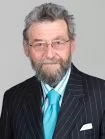Introduction
In a landmark ruling in October, the UK Supreme Court overturned the decisions of three lower tribunals and courts, and awarded an inventor (Professor Ian Shanks) compensation of £2 million from his employer (Unilever) in relation to a patent protecting diabetic sensors. In making this award, the Supreme Court has swept away a perceived rule that some employers are simply "too big to pay" inventor compensation under the UK's statutory compensation provisions. We provide an analysis of the case below.
The law
The starting point under English law is that the legal rights in inventions created by employees in the course of their normal duties belong to their employer, provided an invention might reasonably be expected to result from the employee carrying out their normal duties. Under section 40 of the Patents Act 1977, however, an employee inventor can apply for compensation where the patent (or, for patents applied for after 1 January 2005, the invention underlying it) is of "outstanding benefit" to the employer.
No statutory guidance is provided as to how "outstanding benefit" should be assessed except to say that regard should be had to "among other things the size and nature of the employer's undertaking". It is generally accepted that an employee who would be reasonably expected to produce inventions that return some benefit to the company is remunerated by way of their salary and as such, will only be entitled to compensation for developing an invention which benefits the employer beyond the normal scope of returns.
Unsurprisingly, this wording has been the subject of much argumentation in the courts and it is clear from the House of Lords when this legislation was debated, that this legal confusion was not entirely unexpected. Lord Nelson of Stafford notably said in a debate in February 1977:
"I have never seen such a collection of vague terms in my life... What is "outstanding benefit"? ... Who is to be the Solomon who will sort out all these vaguenesses at the end of the day and adjudicate on compensation when a claim is made? I hesitate to think."
Before this decision, the courts' approach to determining outstanding benefit had generally been to compare the turnover and profit of the employer with the benefit of the patent derived by the employer, taking into account the leverage or assets at the employer's disposal which might inflate the benefit. This gave rise to a perceived de facto rule that some employers are simply too big to pay compensation to an inventor under s. 40.
For over 30 years after it came into force in 1978, there was no reported case of a successful application for compensation under s. 40. The first successful reported application was Kelly and Chiu v GE Healthcare in 2009. In that case, the employees Mr. Kelly and Mr. Chiu had developed a compound called P53 for use in a radio-imaging product - Myoview, which was later patented. The overall worldwide sales of the Myoview amounted to almost £1.3 billion during the life of the patents.
The benefit that the Myoview product brought to Amersham (their employer at the time) was caused by more than just the patent, and so the court isolated the benefit derived from the patent family by estimating how Myoview would have performed in sales without the patent – the so-called "but for" test. In doing so, it was found that, but for the patents, Amersham would have faced financial crisis. The judge observed that the benefits "went far beyond anything which one could normally expect to arise from the sort of work the employees were doing" and therefore held them to be outstanding. A share of 3% of the benefit to Amersham, valued at £1.5 million, was awarded to the inventors.
The Shanks v Unilever case
The applicant, Professor Shanks, was employed by Unilever UK Central Resources Ltd ("CRL"), who provide research services to the Unilever group more widely. Whilst employed, he invented a sensor for the measurement of glucose levels in blood for diabetic patients. Unilever filed a patent application in 1984, which resulted in a family of patents in countries including the UK, other European countries, Australia, Canada, Japan and the USA. The patent rights automatically belonged to CRL as the employer, who assigned them to Unilever plc. Unilever licensed the patents to third parties, who produced sensors implementing the invention, and eventually sold the patents in 2001. Unilever's total worldwide net benefit from the patents was assessed at around £24 million.
Professor Shanks made an application for compensation to the Comptroller General of Patents in June 2006. The hearing officer dismissed Professor Shanks's application in 2013 after a long delay in proceedings, on the grounds that having regard to the size and nature of Unilever's business, the benefit provided by the patents fell short of being outstanding. Professor Shanks brought appeals to the Patents Court (2014) and Court of Appeal (2017), both of which were unsuccessful.
The employer's undertaking was held by the hearing officer to be the Unilever group as a whole, notwithstanding that the actual employer was a relatively small research subsidiary. That decision as to the identity of the employer's undertaking was upheld by the Patents Court and Court of Appeal.
The consequent difficulty for Professor Shanks was that the income from the patents was dwarfed by Unilever's global earnings more generally. On no view could the income be said to be outstanding when compared to the earnings on, for example, Unilever's global ice cream sales.
Lord Kitchin, however, giving the Supreme court judgment with which the other four justices agreed, held that the fundamental error committed by all the lower tribunals/courts, was, in regarding the employer's undertaking as the Unilever group as a whole, and simply comparing the income from the patent with the group's income overall.
Lord Kitchin stressed the need to look at the "commercial reality of the situation ... from the perspective of the inventor's employer". Whereas a simple comparison of incomes from the patent against the employer's overall income may be adequate for smaller employers, a more nuanced approach is required for larger employers such as Unilever. In terms of the factors that must be taken into account, Lord Kitchin cautioned that "there is no single answer to this question", but listed factors including:
- Whether the benefit is more than would normally have been expected to arise from the duties for which the employee was paid;
- Whether it was arrived at without any risk to the business;
- Whether it represents an extraordinarily high rate of return;
- Whether it provided the employer with the opportunity to develop a new line of business or to engage in unforeseen licensing opportunities.
Given that CRL operated as a research facility for the entire Unilever group, the correct approach was to consider the extent of the benefit of the Shanks patents to the group, and to compare that with the benefits derived by the group from other patents arising from the research carried out by CRL. Lord Kitchin regarded the foregoing comparison as a "highly material consideration" in the overall assessment.
Unilever was unable to point in its evidence to any other licensing deal or other income from a patent which had provided an income at or above that of the Shanks patents. That lack of evidence, coupled with the low level of effort required on Unilever's part to generate the licensing income, and the low level of risk incurred, meant that the Shanks patents, were found to be of outstanding benefit.
The hearing officer had determined the fair share of the benefit (had he held there to be an outstanding benefit) to be 5%. Lord Kitchin agreed with that, and following adjustment for inflation, awarded Professor Shanks the sum of £2 million.
Thoughts on the Supreme Court ruling
The manner of assessing whether a benefit has been outstanding in the UK has been clarified in the UK Supreme Court decision. Rather than a simple mathematical comparison of sums of money, the court must carry out a multifactorial assessment, taking into account the commercial reality and a list of factors which will need to be tailored to the specific employer.
The law has now changed, of course, and the benefit can derive from an 'invention', not just a patent. How is this to be done? The Shanks case gives no guidance on how to calculate the benefit in this instance. However, more guidance was given by Aldous J in an earlier case (in the Patents Court in Memco-Med Ltd's Patent [1992] RPC 403). Under the 'old' law, Aldous J indicated that it could be useful to assume that the patent was never granted, and then compare the actual position of the employer with the position he would have been in if the patent had not been granted.
Using the combined logic of the Memco-Med and the Shanks cases, under the 'new' law (i.e. for post-January 2005 filed patents), the assessment that will most likely need to be made, for each 'invention', is to assess what financial position the employer would have been in had each 'invention' not been devised, and then compare this position across its portfolio of patented inventions. This approach raises some interesting questions, such as how to precisely calculate the 'benefit' for any single invention (which is typically only part of a product), and trying to assess what position the company would be in had no one thought of it. The Supreme Court case gives no guidance on this point. We will need to wait for a further case, based on a patent filed since 1 January 2005, for the Court's view on how this is to be calculated. It also raises an interesting question for smaller companies, which may be entirely reliant on a single patent family. In that case, the entire company's existence could be because of a single invention (as is the case for many university spin-outs). Is that enough to qualify as 'outstanding benefit'? Presumably not, otherwise all small companies reliant on a single patent family would be liable for inventor compensation, which does not seem fair if larger companies are not. Therefore, we can expect some element of assessment to the companies' commercial situation, and perhaps comparison with other companies of similar size and situation, to see if the benefit in that situation is 'outstanding'.
This decision may offer some hope to prospective employees looking for compensation, and it is possible that it will result in an increased number of applications to the court for employee compensation under s. 40, with a higher proportion of those being successful. However, there are some realities, such as fear of suing an existing employer affecting career progression, that may put a natural break on the number of people who make applications.
Other jurisdictions
While most of the laws relating to granting patents are harmonised in the EU and around the world, the laws relating to inventor compensation vary considerably between different jurisdictions, and have not been widely tested in the courts. For example, in Germany, the law requires all inventors to be compensated for their inventions, and gives clear guidance on the procedure for calculating the compensation. Compared to the award given to Shanks, the compensation in each case is usually relatively modest. Inventors in Germany also have many more rights in relation to the patents than in other jurisdictions (e.g. the right to take over the patents if the employer decides to abandon them). France too, has its own provisions on inventor compensation, resulting from a combination of statute and collective bargaining agreements in certain industries. This often leads to companies having clear policies on when they pay compensation (e.g. on the filing of a patent application and after this). In contrast, some other major jurisdictions, including Australia and the USA for example, do not have any statutory provisions for inventor compensation at all.
One commonality between those jurisdictions which do provide for substantial inventor compensation is that it only applies in exceptional circumstances, as the inventor is already considered to be remunerated by their salary, and there are very few recorded successful cases.
Although, one notable successful case was in Japan in 2006. In a Supreme court decision in Yonezawa v Hitachi, Hitachi were ordered to pay $1.4 million of compensation to Mr. Yonezawa in relation to three patents linked to optical disk technologies. The decision of first instance had awarded only $300,000 to Yonezawa, having taken into account only revenues generated by the Japanese patent. However, the Supreme Court of Japan ruled that the worldwide benefit derived from the whole patent family should be considered when awarding compensation. This is very similar to the approach taken by the UK courts.
Conclusion
The UK Supreme Court case, if anything, highlights the very unclear nature of inventor compensation legislation in the UK, as was originally envisaged by the House of Lords. Even with the current Supreme Court case, there are still many questions to be answered on the law (e.g. the assessment of how the benefit from an 'invention', as opposed to just a patent, is to be assessed in many situations). It will take more wrangling in the Courts before the situation gets clearer. The authors of this paper expect an increase in claims for inventor compensation as a result of the Shanks case, but perhaps not a flood. Perhaps where we will see most claims is from inventors who are named on patents that cover blockbuster products or are subject to superlative licensing revenues and who have left their company since the patent was filed. The UK is nevertheless some way off providing compensation for all employed inventors, as is the case in Germany. It may nevertheless prompt companies to re-visit their own schemes to see if they ought to be taking into account the situation of a patented invention becoming a blockbuster or receiving superlative licensing revenues.
The content of this article is intended to provide a general guide to the subject matter. Specialist advice should be sought about your specific circumstances.






